At Hive Equestrian we love horses. One of our main aims is to share that love with our clients creating the best experience for the owners of horses. In order to deepen your interest in horses, here are ten fen facts about horses that we found interesting:
Horse’s reflexes are lightning fast
As prey animals, horses fight-or-flight response systems were extremely fast. When they need to fight, horses can deliver an extremely powerful kick in just 0.3 seconds. This is significantly faster than the average human reaction time of 1.6 seconds. This is why it is so dangerous to stand behind a horse as if it is intimidated by you, it can deliver a lethal kick nearly instantly.
Horses can sleep standing up
Horses can rest/sleep while standing up or lying down. To avoid falling over whilst sleeping, the horses only doze while stood up. For REM sleep they lie down. Effectively they nap while stood up. This is an evolutionary trait as while lying on the floor, they are vulnerable to attacks from predators. They can doze while stood up due to their stay apparatus. This is a special arrangement of tendons and ligaments which allows the horse to lock its major joints in its leg for stability.
Horses nearly have a 360-degree field of vision
As horses are prey creatures, over thousands of years they have evolved to have an eye on each side of their face. Each eye is large and has a 180-degree field of vision. This evolutionary trait allowed horses to keep an eye out for its predators so that they could escape and survive.
Foals can walk and run within hours of being born
From birth, foals are already relatively mobile after just a few hours of finding their feet. This is because foals are very vulnerable to predators straight after birth and so need to be able to escape danger if necessary.
Horses can live to be more than 60 years old
Over the years, horse nutrition, care and veterinary medicine standards have all increased drastically. This has played a significant role in dramatically increasing the life expectancy of horses. Equine longevity has increased over the years with the greatest age reliably recorded for a horse being “Old Billy” who lived for 62 years.
Horses were domesticated around 6000 years ago
Evidence found at archaeological sites shows that horses were first domesticated around 6000 years ago in the western part of the Eurasian Steppe. This area today is modern-day Ukraine and West Kazakhstan. It is believed that the earliest ancestor of the horse lived 55 million years ago. This ancestor was much smaller and around the size of a large dog.
Horses are very social
Horses find a sense of safety and family in a herd and form very strong social bonds with one another. This bond can also be replicated with the owner/riders of the horse. Their senses can help recognise familiar horses and humans and they will then choose to spend time with those they have formed a relationship/friendship with if given the choice. In herds, one horse will stand guard and keep watch while the other horses are able to eat, rest and sleep. These behaviour patterns are often very similar to those of humans.
Horses are herbivores
This means that they only eat a plant-based diet. Their teeth are designed to have grinding molars which break down fibrous plant material. Other typical traits of a herbivore that horse have are the position of their eyes and the type of digestive system they have. For more information on a good diet for horses, click here.
Horses are measured in hands
Hands is the standard measurement for determining the height of a horse. One hand is equal to four inches. A pony is defined as a horse under the height of 14.2 hands. However, miniature horses are measured in inches or centimetres.
Horse’s resting respiratory rate is around 8-14 breaths per minute
This is an important figure to know. If the resting respiration rate of the horse is low, then it is usually comfortable and relaxed. If the rate quickly increases, it could be due to work/activity or distress. If you learn your horse’s resting pulse and respiration rate (TPR), then it can become much easier to spot when your horse is uncomfortable and so you can help to relax your horse and rectify the issue.
We hope that you found this article interesting. At Hive Equestrian, our main aim is to provide clients with the best possible relationship with their horse. In order to have a good relationship with your horse, it is extremely important that your horse is healthy and happy. It is good to know a little more about your horse so that you can provide it with the best home. Within our Pegasus Package, we arrange several services to provide your horse with the best life. This will in turn make riding more enjoyable as you can build a better relationship with your horse. We understand how amazing it is to have your own horse, but we are also experienced with what can seem to be an endless list of problems that always arise when caring for your horse. Our Pegasus package alleviates some of the stress and problems that come with owning a horse. We provide several services from lessons, to booking vet appointments to name a few. If you are interested in improving your equestrian experience and solving many of your equestrian related problems all in the same place, click here now. We also offer many other additional services which are easily found here. Our Pegasus Package members will receive a 10% discount on these services.
